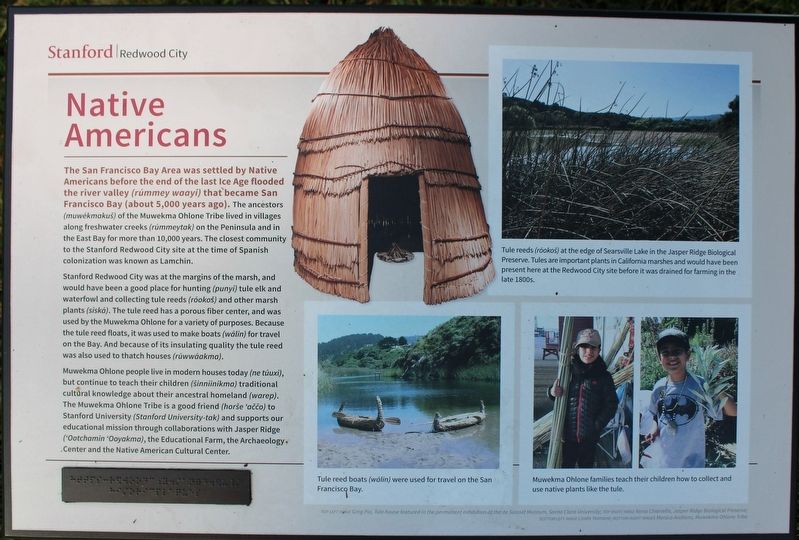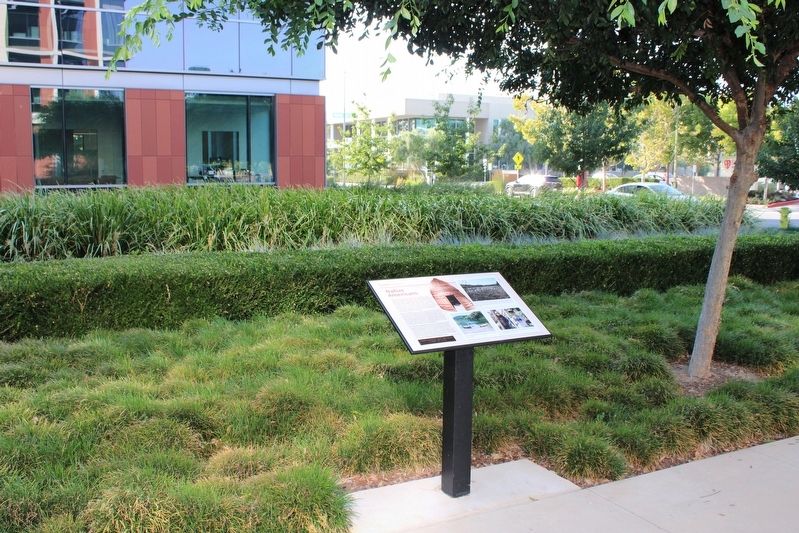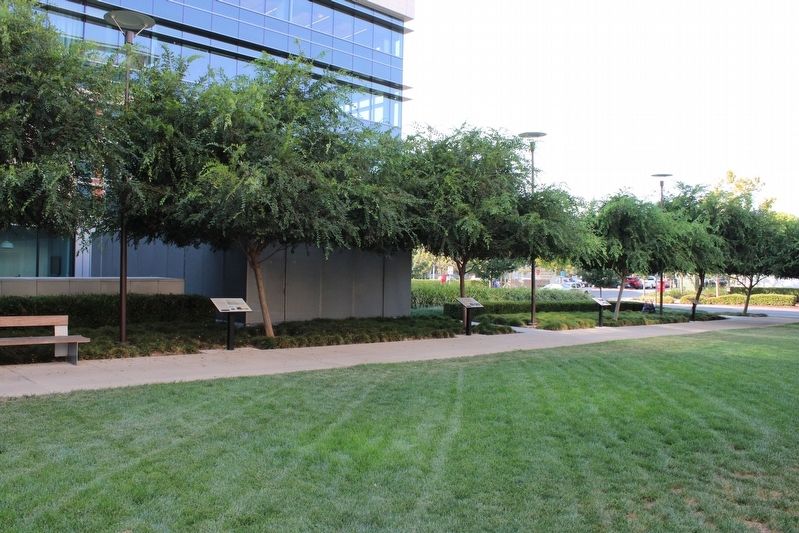Redwood City in San Mateo County, California — The American West (Pacific Coastal)
Native Americans
— Stanford | Redwood City —
The San Francisco Bay Area was settled by Native Americans before the end of the last Ice Age flooded the river valley (rúmmey waayi) that became San Francisco Bay (about 5,000 years ago). The ancestors (muwékmakuš) of the Muwekma Ohlone Tribe lived in villages along freshwater creeks (rúmmeytak) on the Peninsula and in the East Bay for more than 10,000 years. The closest community to the Stanford Redwood City site at the time of Spanish colonization was known as Lamchin.
Stanford Redwood City was at the margins of the march, and would have been a good place for hunting (punyi) tule elk and waterfowl and collecting tule reeds (róokoš) and other marsh plants (siská). The tule reed has a porous fiber center, and was used by the Muwekma Ohlone for a variety of purposes. Because the tule reed floats, it was used to make boats (wálin) for travel on the Bay. And because of its insulating quality the tule reed was also used to thatch houses (rúwwáakma).
Muwekma Ohlone people live in modern houses today (ne túuxi), but continue to teach their children (šinniinikma) traditional cultural knowledge about their ancestral homeland (warep). The Muewkma Ohlone Tribe is a good friend (horše ‘ač čo) to Stanford University (Stanford University-tak) and supports our educational mission through collaborations with Jasper Ridge (‘Ootchamin ‘Ooyakma), the Educational Farm, the Archealogy Center and the Native American Cultural Center.
(There is a small panel in braille below the main text)
Images:
(Top) Tule reeds (róokoš) at the edge of Searsville Lake in the Jasper Ridge Biological Preserve. Tules are important plants in California marshes and would have been present here at the Redwood City site before it was drained for farming in the late 1800s.
(Bottom Left) Tule reed boats (wálin) were used for travel on the San Francisco Bay.
(Bottom Right) Muwekma Ohlone families teach their children how to collect and use native plants like the tule.
Erected by Stanford University.
Topics. This historical marker is listed in these topic lists: Anthropology & Archaeology • Education • Native Americans • Waterways & Vessels.
Location. 37° 29.105′ N, 122° 12.197′ W. Marker is in Redwood City, California, in San Mateo County. Marker is on Broadway near Warrington Avenue, on the left when traveling west. The resin marker, one of eight, is mounted to a metal stand in the courtyard west of Discovery Hall on the Stanford Redwood City campus. Touch for map. Marker is at or near this postal address: 455 Broadway, Redwood City CA 94063, United States of America. Touch for directions.
Other nearby markers. At least 8 other markers are within 2 miles of this marker, measured as the crow flies. Pleistocene Period (here, next to this marker); Ampex Years (a few steps from this marker); Alta California (a few steps from this marker); Airfield (a few steps from this marker); Historic Connection (a few steps from this marker); Mezesville (a few steps from this marker); Horticultural Heritage (a few steps from this marker); Stage Station (approx. 1.2 miles away). Touch for a list and map of all markers in Redwood City.
Also see . . . Muwekma Ohlone Tribal Website. Historical Timeline (Submitted on September 27, 2022, by Joseph Alvarado of Livermore, California.)
Credits. This page was last revised on September 28, 2022. It was originally submitted on September 27, 2022, by Joseph Alvarado of Livermore, California. This page has been viewed 108 times since then and 31 times this year. Photos: 1, 2, 3. submitted on September 27, 2022, by Joseph Alvarado of Livermore, California.


